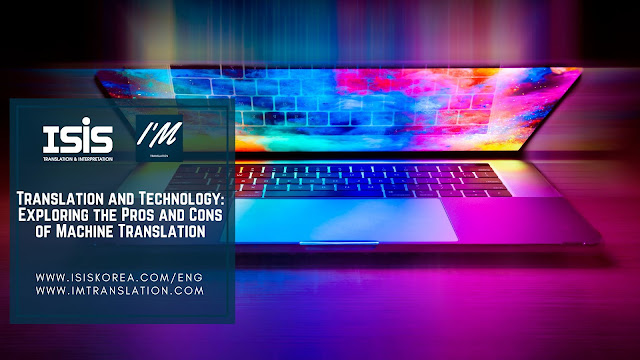Translation and Technology: Exploring the Pros and Cons of Machine Translation
Translation and
Technology: Exploring the Pros and Cons of Machine Translation
In today's
interconnected world, where communication knows no borders, the role of
translation has never been more crucial. With the rise of technology, machine
translation tools like Google Translate and DeepL have become ubiquitous,
promising quick and easy translations at the click of a button. However, while
these tools offer undeniable convenience, they also come with their own set of
pros and cons that warrant closer examination.
The Pros of
Machine Translation:
1. Accessibility: A
wider audience can now obtain translation services thanks to machine
translation systems. Instantaneous text translation between languages is
available to anybody with an internet connection, removing obstacles to
communication and promoting interaction across linguistic divides.
2. Speed: Because
machine translation is so speedy, it's perfect for swiftly understanding
foreign language content or translating short words while on the go. This quick
return time might be very helpful in instances when understanding right away is
critical.
3.
Cost-effectiveness: Especially for big text volumes, machine translation is
frequently more economical than employing qualified human translators. When it
comes to fundamental translation requirements, businesses and individuals can
save money and time by using machine translation software.
4. Constant
Improvement: Using artificial intelligence and machine learning, top machine
translation services like Google Translate and DeepL are always improving their
algorithms. As a result, consumers are getting increasingly dependable results
as translations' quality and accuracy steadily improve over time.
The Cons of
Machine Translation:
1. Accuracy: One of
the most significant drawbacks of machine translation is its inherent lack of
accuracy, especially when dealing with complex or context-dependent content.
Machine translation algorithms often struggle with nuances, idiomatic expressions,
and cultural subtleties, leading to inaccuracies and misinterpretations.
2. Reliability:
Machine translation outputs can vary widely in quality and reliability, leading
to inconsistencies and errors in the translated text. Users must exercise
caution and skepticism when relying solely on machine translation for critical
tasks, as inaccuracies could lead to misunderstandings or even reputational
damage.
3. Limited
Contextual Understanding: Unlike human translators who possess cultural and
contextual knowledge, machine translation tools lack the ability to fully grasp
the subtleties and nuances of language. As a result, translations produced by
machines may lack context and clarity, leading to misunderstandings or
miscommunications.
4. Privacy and
Security Concerns: When using machine translation tools, users often input
sensitive or confidential information, raising concerns about data privacy and
security. There is always a risk that machine translation platforms may store
or misuse user data, highlighting the importance of exercising caution,
especially in professional or sensitive contexts.
Effects on the
Translation Sector:
Without a question, the translation industry has been affected by the broad
availability and use of machine translation tools. These technologies are
accessible and convenient, but they also provide a challenge to professional
translators who have to compete with low-cost or free automated alternatives.
But rather than taking the place of human translators completely, machine
translation has mainly enhanced their productivity by acting as a helpful tool
for preliminary or simple translations.
In conclusion, there
are clear advantages to accessibility, speed, and cost-effectiveness when using
machine translation systems like Google Translate and DeepL, but there are also
serious drawbacks in terms of accuracy, dependability, and contextual understanding.
Recognizing the importance of human translators in producing complex,
culturally appropriate translations that robots cannot match is crucial as
technology develops further. We can more successfully traverse the challenging
terrain of multilingual communication by utilizing the advantages of both
machine translation and human experience. This will help to break down
linguistic barriers and promote deeper understanding between cultures.
Need a translation? I’M Translationand ISIS Korea provides professional translation and interpretation services.
How might I’M Translation andISiS Korea aid translation?
At I’M Translationand ISiS Korea, we can connect you with a professional translators and
interpreters. We have over 30+ languages available on our platform and we are
flexible and available regardless of the language pair, topic, and time zone.
Please visit us at www.imtranslation.com and www.isiskorea.com/eng to request a free translation and interpretation
quote. Thank you.




Comments
Post a Comment